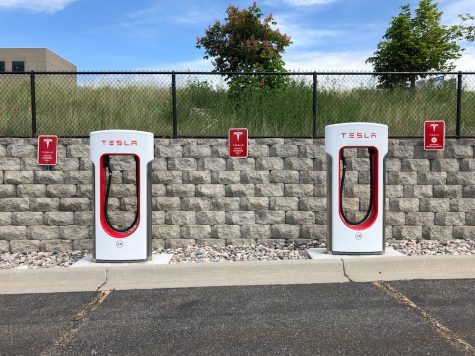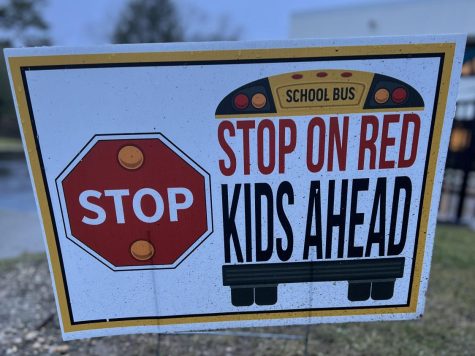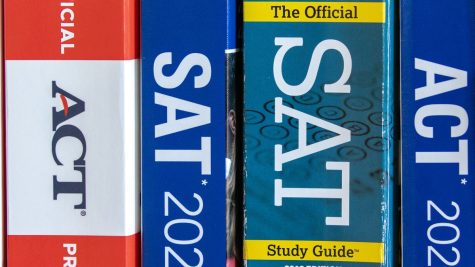The COVID Vaccine: A Polarizing Issue
In December of 2020, Long Islander Sandra Lindsay became the first American to receive the COVID-19 vaccine. As of March, 2021, 12.5% of Americans have received one of the three FDA approved vaccines, with a total of 116 million doses having been given. We surveyed members of our high school community to understand their opinions on the vaccines as it continues to become more available to the public.
Over the past week, we have received 78 responses from staff and students. The results are as follows:
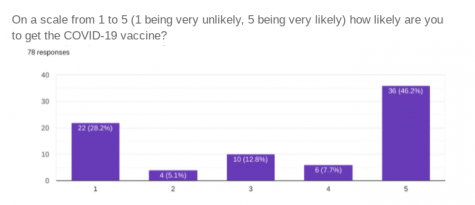
The graph above proves this issue to be polarizing, with nearly 75% voting for one of the two extremes. Most of those who were likely to get the vaccine said that they would get it as soon as it became available to them. More questions were asked to attempt to determine the reason why some were hesitant or completely against being vaccinated. The results for the following questions are shown below.
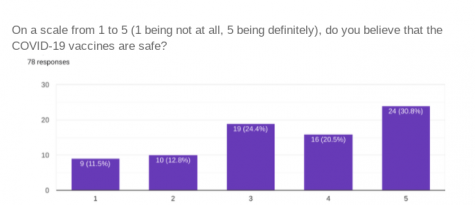
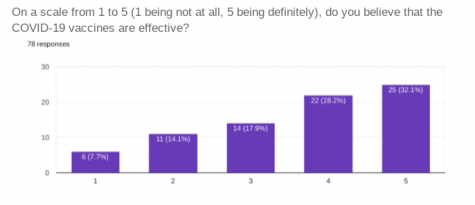
The patterns shown in the graphs above display that most people believe the vaccines are both safe and effective. Opinions on the vaccines’ safety seem to be more controversial than opinions on its effectiveness, with more people unsure about the potential safety risks. The pause on the distribution of the Johnson & Johnson vaccine due to the rare but severe side effect of blood clots has only strengthened the beliefs of those who say the COVID-19 vaccines are unsafe.
English teacher Ms. Christine Varvaro received her first dose of the Pfizer vaccine in mid-March and her second dose in mid-April. Ms. Varvaro experienced no symptoms following either dose, but she had heard of some experiencing headaches, body aches, dizziness, and tiredness. She detailed her experience of the vaccination process comparing it to Disney World, constantly moving from room to room and line to line. Still, she explained the process as efficient despite its complex nature. The line was long but moved quickly to receive what she described as a “painless vaccine” that should be “taken seriously.”
Another member of SWRHS who chose to remain anonymous echoed the worries that many people who are pro-vaccine share. “The issue becomes that we need a certain percentage to get that herd immunity. This is going to help facilitate enough people becoming able to go about their daily life without having to wear masks and so on and so forth.”
We were unable to find someone with the anti-vaccine perspective that was willing to be interviewed, but according to the Center for Infectious Disease Research and Policy, around 70% of the population must be vaccinated to reach herd immunity. With a large portion of the population weary about receiving the vaccines, only time will tell how effective our recovery will be and if this herd immunity will be reached.
If this herd immunity is reached, many scientists and government officials recommend that COVID-19 safety protocols should still be followed after being vaccinated. “Currently, we do not have enough data to be able to say with confidence that the vaccines can prevent transmission…so even if vaccinated, you may still be able to spread the virus to vulnerable people,” said White House health advisor Dr. Anthony Fauci. Another anonymous SWRHS member encouraged people to listen to Dr. Fauci and the protocols set in place. “My hope is that everyone continues to follow the protocols that are laid out because the sooner that we can get everyone on the same page, the sooner this will be over.”


